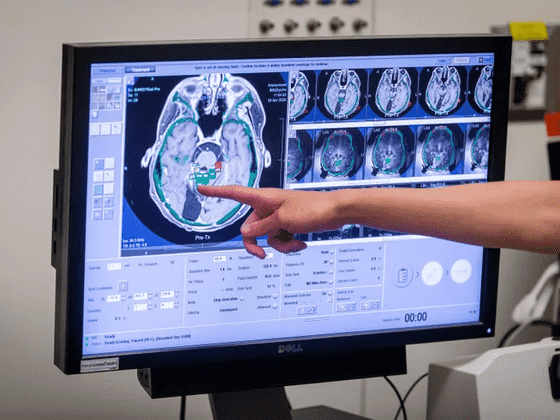Introducing a treatment method that 'sends a cancer drug to the brain' with an ultrasonic beam

For cancers in the brain that could not be expected to be effective with conventional monoclonal antibody treatment, a new treatment method called 'delivering monoclonal antibody to the brain by MRI and ultrasonic beam' has appeared.
MR-guided focused ultrasound enhances delivery of trastuzumab to Her2-positive brain metastases
MRI and Ultrasound Can Sneak Cancer Drugs into the Brain --IEEE Spectrum
https://spectrum.ieee.org/mri-ultrasound-brain-cancer
Monoclonal antibodies are antibodies created by cloning specific antibodies produced by the human body against foreign substances such as virus-infected cells and cancer cells. For how monoclonal antibodies cure cancer, the following movie (with Japanese subtitles) created by the National Cancer Institute can be used as a reference.
How Do Monoclonal Antibodies Cure Cancer? / National Cancer Institute (NCI) --YouTube
Cancer treatment with this monoclonal antibody has been attracting attention in recent years, but for cancer in the brain, due to the existence of a mechanism called the blood-brain barrier that prevents foreign molecules from moving between blood and brain tissue, It was difficult to get the monoclonal antibody to the brain.
Under these circumstances, a new team of neurosurgeons at the Sunnybrook Health Sciences Center in Canada said, 'The ultrasonic beam induced by MRI temporarily invalidates the blood-brain barrier near the tumor and sends a monoclonal antibody to the brain.' Developed a cure.
Clinical trials have already been conducted in humans, and four patients with HER2-positive breast cancer, a type of metastatic breast cancer, received trastuzumab , a monoclonal antibody treatment for HER2-positive breast cancer, with 1024 ultrasonic transducers. It was administered while receiving ultrasonic irradiation from a hemispherical helmet equipped with. This administration was given 20 times in total (up to 6 times per person), and a system for tracking drugs with radioactive substances confirmed that many drugs reached the tumor but not unrelated areas. No noticeable side effects were found during the experiment.

Regarding the results of this study, the lead author of the paper, Nil Lipsman, said that it was 'very promising' and 'it can deal with various diseases that affect the brain as well as cancer', but comments were requested. Professor Nathan McDanold of the Department of Radiology, Harvard University School of Medicine said that it is unclear whether a strong therapeutic effect can be obtained, and that the drug tracking system using radioactive substances has a considerably low resolution, and the amount of drug that reaches the tumor He said he should be aware that the measurements may be inaccurate.
Related Posts:
in Science, Posted by darkhorse_log







